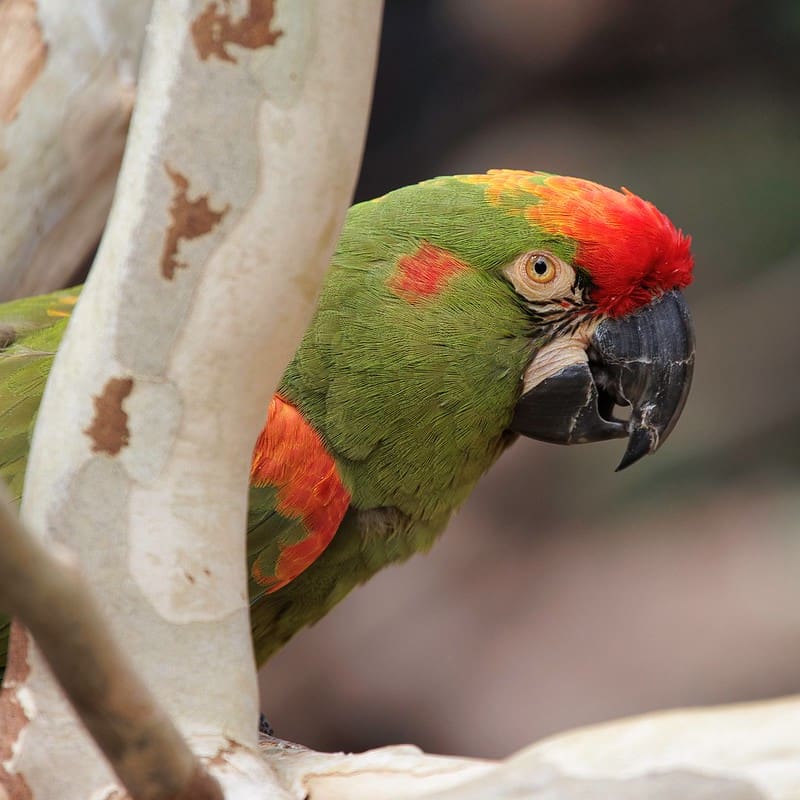The Red-fronted Macaw’s range is extremely restricted with about 40% of its habitat having been destroyed for agriculture and fuel. Grazing domestic animals have impacted ground cover regeneration. Some macaws are persecuted for crop raiding and illegal trapping still occurs. By 2007 there were fewer than 500 breeding pairs, and a range-wide survey in 2011 located 130 pairs.
Since 2002, the WPT has led work investigating the extent of trapping, finding that nests were poached and that there was a lack of enforcement of protection laws, has supported partners working closely with the government to improve enforcement, and helped implement an education program for local people to better co-exist with the macaws.
In 2017, efforts to understand broader threats and work with communities began. The aim was to help farmers protect crops during the dry season while protecting the birds, which look for new food sources.
Status: IUCN Critically Endangered / CITES Appendix I
Population: 600-800 individuals, rapidly decreasing.
Threats: This species has a restricted range. Approximately 40% of its habitat has been converted to agricultural use by the 1990s; regeneration of ground cover has been seriously impaired by grazing domestic animals. Some macaws are persecuted as pests for crop raiding. Illegal trapping still occurs.
Range: Restricted to a small area on the east Andean slope of C and S Bolivia.
Natural history: Is found mainly in valleys. Is seen in xerophilous thorny scrub with cacti, scattered trees and shrubs, and steep-sided, undisturbed riverside cliffs for nesting and roosting. Feeds on seeds and fruits but this is often scarce; crop plants such as maize and groundnuts are also taken. Breeding is October-March; nests are in a loose colony in cliff tunnels and occasionally palm tree cavities.

